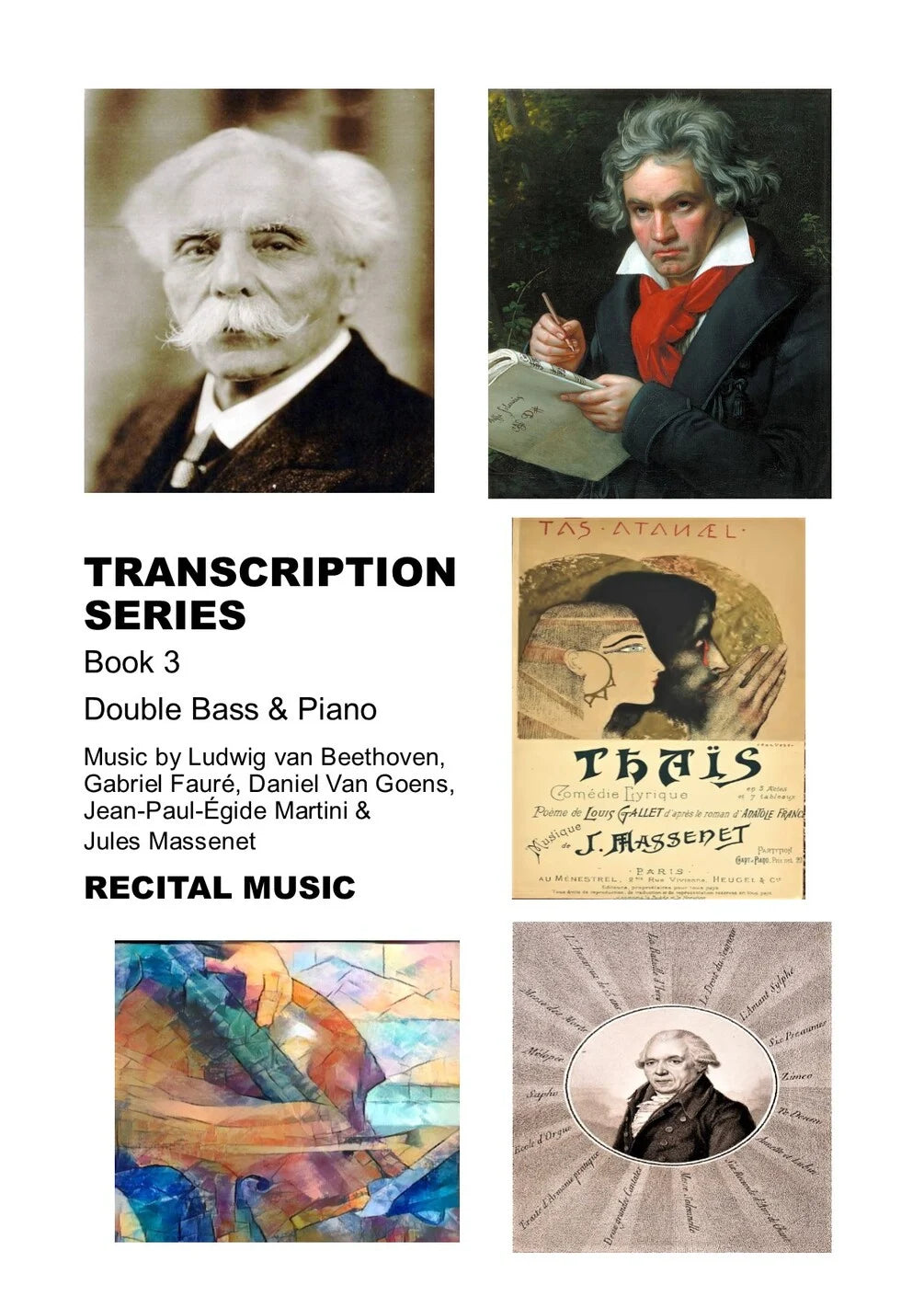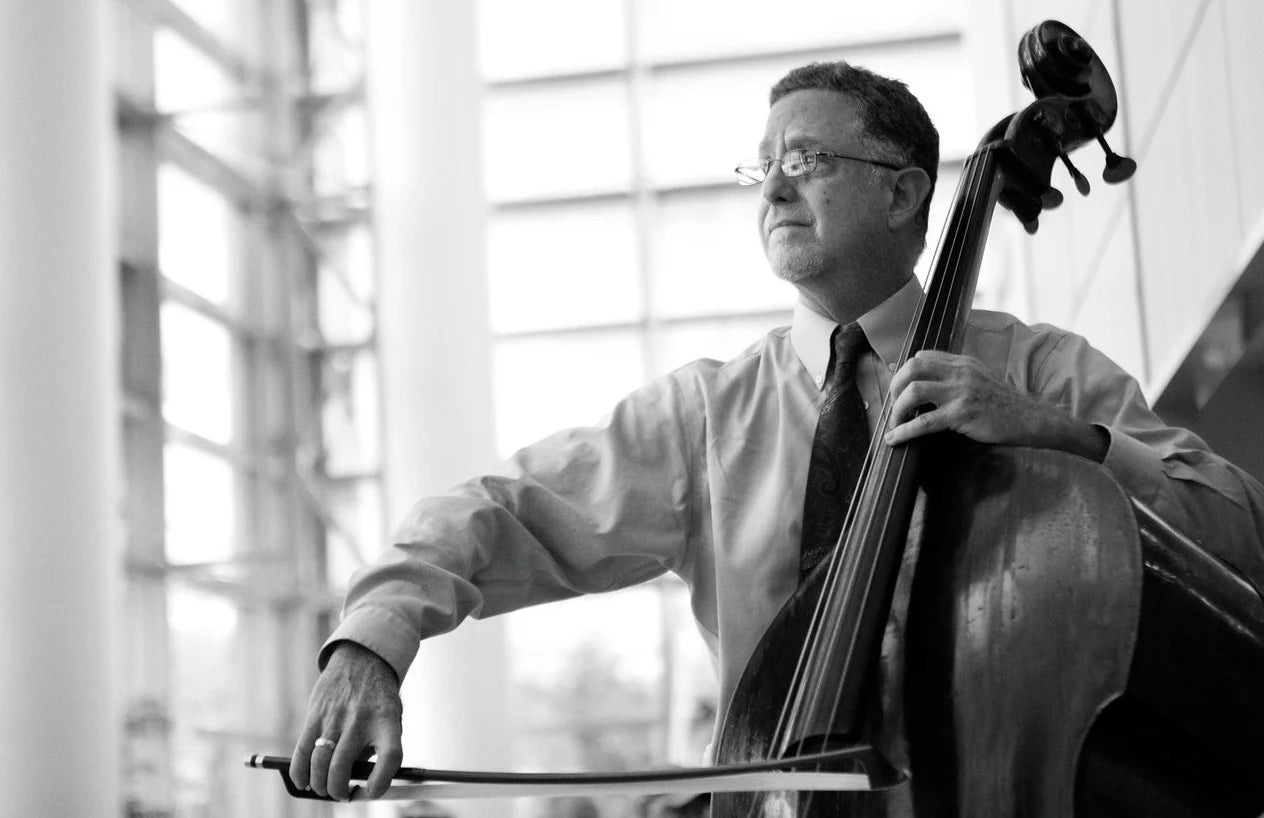David Heyes
Transcription Series Book 3 (arranged by David Heyes) for double bass & piano
Transcription Series Book 3 (arranged by David Heyes) for double bass & piano
Couldn't load pickup availability
About the Collection
Transcription Series Book 3 brings together five evocative, lively and accessible works for the intermediate and advanced bassist, arranged by David Heyes.
Ideal for both study and recital repertoire, each piece offers a range of musical and technical challenges, throughout the orchestral and solo register, emphasising the lyrical and cantabile potential of the double bass.
The edition includes piano accompaniments for both solo and orchestral tuning.
Table of Contents
1. Ludvig van Beethoven (1770-1827) - Recitative & Aria from ‘Fidelio’
'Fidelio' was Beethoven's only opera, first performed in Vienna in 1805, subsequently revised and newly premiered in 1814. No other work caused him so much frustration and disappointment and he found the difficulties of writing and producing an opera so disagreeable, that he never attempted to compose another.
'Abscheulicher! wo eilst du hin?...Komm, Hoffnung, lass den letzten Stern' is a recitative and aria from Act 1 of 'Fidelio' and performed by Leonora (soprano). The aria was transcribed for double bass by František Simandl (1840-1912) and first published by C.F. Schmidt (Heilbronn, Germany) as part of his Method for the Double Bass III: Advanced Course (Volume 6). Simandl was a pioneer of his day and composed, transcribed and commissioned a wealth of music for the double bass when few others were doing so. Simandl is fairly faithful to the original aria, although he does occasionally embellish the melodic line to create added interest and variety. The aria has been described as 'one of the most emotionally gripping arias in opera literature' and the sonorous and dramatic cantabile of the solo double bass adds a new dimension to music of enormous depth and passion.
2. Gabriel Fauré (1845-1924) - Après un Rêve
A number of works by Gabriel Fauré have been transcribed for double bass and one of the most successful is surely the song Après un Rêve, one of the composers most sublime creations. A gently moving accompaniment and constantly changing harmonies provide a strong pulse and support above which a languid and dreamy melody gently weaves its magical spell.
Après un Rêve is available in a number of keys and this edition, a minor third higher than many others, is in the beautifully lyrical and sonorous solo register and is ideal for the advanced bassist. The song emphasises the rich singing qualities of the double bass and the long and sinuous melodies demonstrate far more than a technical command of the instrument.
3. Daniel Van Goens (1858-1904) - Scherzo
A staple of the solo repertoire and popularised by Gary Karr, this cello transcription works brilliantly for the double bass demonstrating both the technical and musical possibilities of the instrument. Ideal as an encore, or the final work in a recital, Scherzo is a wonderful showpiece offering much for the performer and audience alike and aimed at the intermediate bassist.
The name of Daniel van Goens is remembered today primarily for one particular work for cello and piano which has now become standard repertoire for double bass. During his short life Daniel van Goens composed over 40 works, mainly published in Paris by J.Hamelle and, on the whole he was drawn towards composing shorter characteristic works, although many of the pieces for cello and piano also exist with orchestral accompaniment. The 'Scherzo' is the second piece of his Op.12 and dates from the early years of the 1890s was and first
published in Paris in 1895 as 'Deux Morceaux' for cello and piano, subsequently published in America in 1913 by M. Witmark & Sons (New York).
4. Jean-Paul-Égide Martini (1741-1816) - Plaisir d’Amour
The 18th-century song Plaisir d'Amour was first arranged for double bass by the French bassist Édouard Nanny (1872-1942). Composed in 1784, setting words by Jean-Pierre Claris de Florian (1755-1794), Plaisir d'Amour has been popular for over 200 years and has been reinvented by each singer and for a new generation. In 1859 Hector Berlioz arranged Plaisir d'Amour for voice and orchestra, adding an evocative and stylish accompaniment to the most perfect of melodies, which helps to account for its longevity.
In the 1920s Édouard Nanny arranged the song for double bass and piano, published in 1929 by Alphonse Leduc (Paris), although the edition attributes it to G.B. Martini, also known as Padre Martini. These Martini's certainly liked to cause confusion with so many different names. Nanny adds an unaccompanied introduction for double bass, punctuated by tonic and dominant chords, before the song itself begins. In D major, the melody is presented simply and with the addition of double stops in the second verse, contrasted by music of a more urgent nature in the tonic minor, before the theme is reprised and ends gently and successfully, an octave higher ad lib. Nanny removes the piano introduction before each verse, tightening the structure, but both versions are wonderfully effective in performance.
5. Jules Massenet (1842-1912) - Meditation from Thaïs
Originally for violin, this beautifully evocative and lyrical Meditation from the opera Thaïs has quickly become 'standard' repertoire for double bass. The melodic potential is exploited to the full and emphasises the singing and dramatic possibilities of the solo bass. There are long flowing melodies throughout the range of the instrument and many opportunities to display an advanced technique and musicality.
The three-act opera Thaïs was composed in 1890, to a libretto by Louis Gallet, after Anatole France's novel, and was first produced in Paris on 16 March 1894. It is set in 4th-century Egypt and tells how the monk Athanael converts the courtesan Thaïs, who becomes a nun, but loses her soul in the process. Meditation is played between Scenes 1 and 2 of Act Two.













